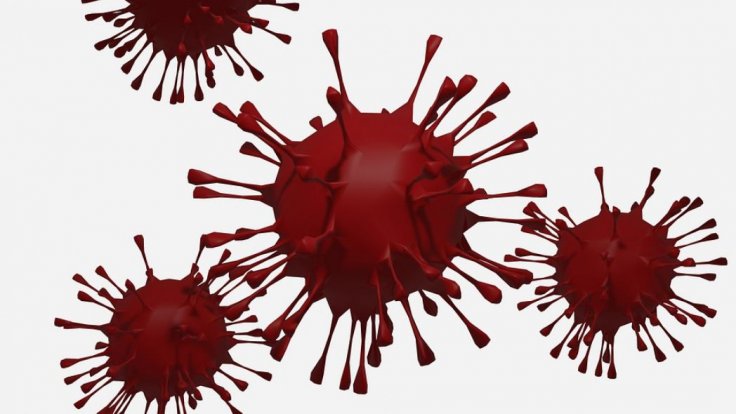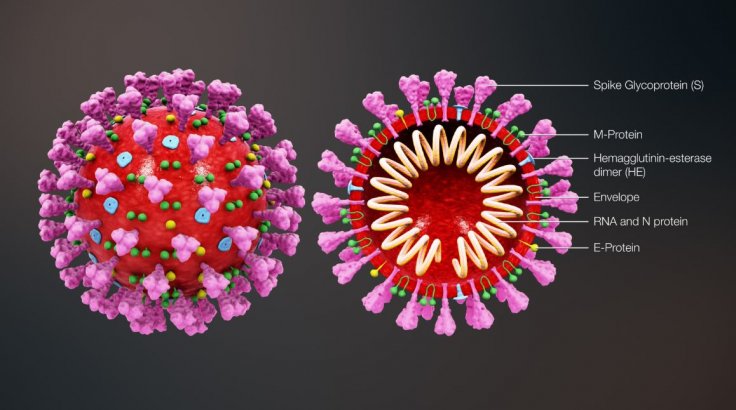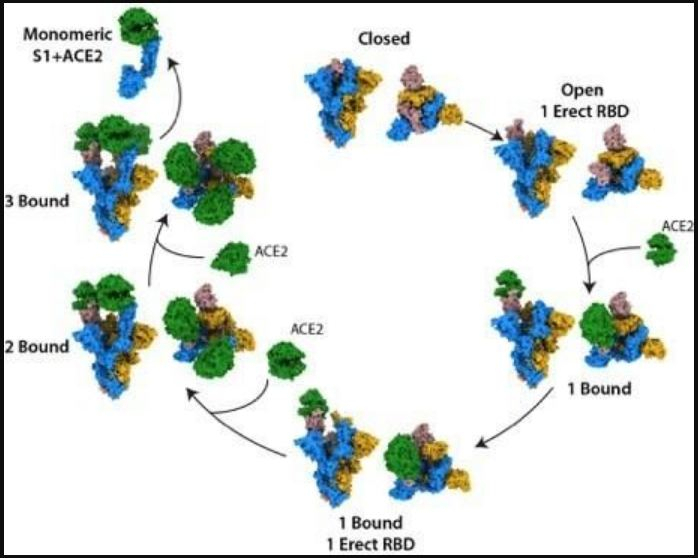The most lethal part of the SARS-CoV-2 coronavirus—the spike protein—is what helps the virulent pathogen in invade human cells and infect them. Now, a new study has found that the structure is a lot more deadly and trickier than previously assumed.
According to researchers from the Francis Crick Institute, the spike can adopt at least 10 different structural states when it comes in contact with the human virus receptor, ACE2, which it uses to gain access to human cells.
The scientists believe that the new understanding of the infection mechanism can enable researchers to develop effective therapeutic regimens and potential cure for the disease. "As we unravel the mechanism of the earliest stages of infection, we could expose new targets for treatments or understand which currently available anti-viral treatments are more likely to work," highlighted Antoni Wrobel, co-lead author of the study in a paper.

Mechanism of Infection
Protein structures known as spikes are found on the surface of the SARS-CoV-2 virus. These protein structures aid the virus in infecting human cells, particularly lung cells. ACE2 (Angiotensin-converting enzyme 2) is an enzyme that is found on the cell membranes of cells in the lungs, intestines, arteries, kidneys and heart.
When the spike protein binds with ACE2 cell receptors, the infection of human cells begins. In the later stages of the infection, it enables the catalyzes that promotes the release of the virus' genetic material into the cell. Nevertheless, the precise nature of the binding of the SARS-CoV-2 spike and ACE2 remains a mystery.

First Study to Analyze Binding Process
While several studies have confirmed the role of the spike protein- ACE2 binding process in the infection of cells, none have explored the mechanism itself. However, the current research is the first to study the mechanism of binding between ACE2 and the spike protein entirely. The authors identified ten distinct structures that are linked to different stages of the receptor binding and the corresponding levels of infection.
For the study, the researchers incubated a mixture of ACE2 and the spike protein. Next, they trapped different shapes of the protein by subjecting the mixture to rapid freezing using liquid ethane. These samples were analyzed under a cryo-electron microscopy and thousands of high-resolution images of different binding stages were obtained.
Adapting to Infect Cells 'Better'
Upon further examination, the scientists made a path-breaking discovery. They found that the spike protein manifests as a mixture of open and closed structures. After binding with the ACE2 at a single open site, the spike protein became more open. This led to a succession of beneficial structural changes in the spike protein that primed it for further binding. Following the spike's binding to ACE2 at all three of its binding sites, its central core becomes more exposed or bare, which may aid the coronavirus in merging with the cell membrane and permit infection.

Donald Benton, co-lead author of the study, said, "By examining the binding event in its entirety, we've been able to characterize spike structures that are unique to SARS-CoV-2." He explained further, "We can see that as the spike becomes more open, the stability of the protein will reduce, which may increase the ability of the protein to carry out membrane fusion, allowing infection."
Developing Improved Treatments
The researchers stated that by uncovering how distinct the SARS-CoV-2 from other known coronaviruses, the development of novel therapeutics and vaccines that are specific and targeted can be boosted. Expressing such hope, Steve Gamblin, lead author of the study said, "There's so much we still don't know about SARS-CoV-2, but its basic biology contains the clues to managing this pandemic. By understanding what makes this virus distinctive, researchers could expose weaknesses to exploit."
However, the authors have not called it a day on the research. They are continuing to investigate the spikes structures of the novel coronavirus and related coronaviruses from other species, in order to develop an improved understanding of the mechanism driving their evolution and infection capacities.









